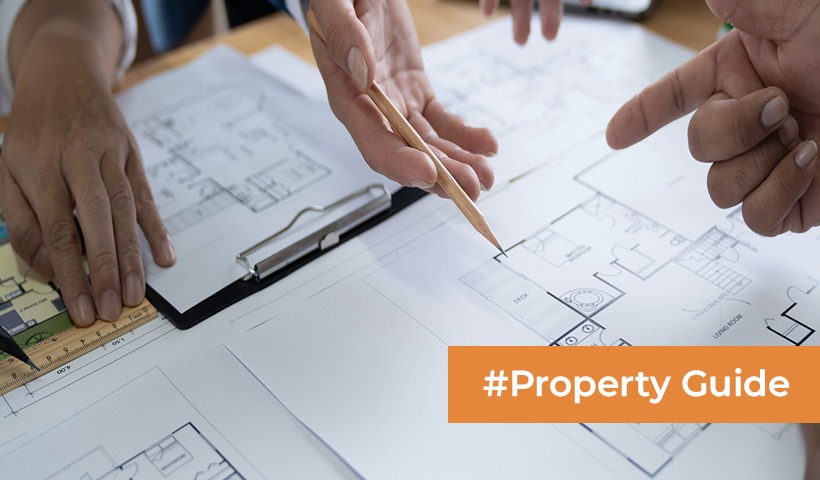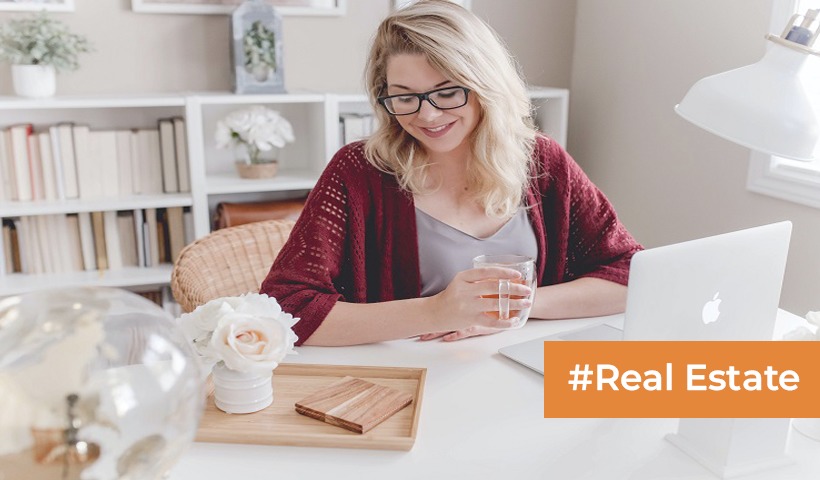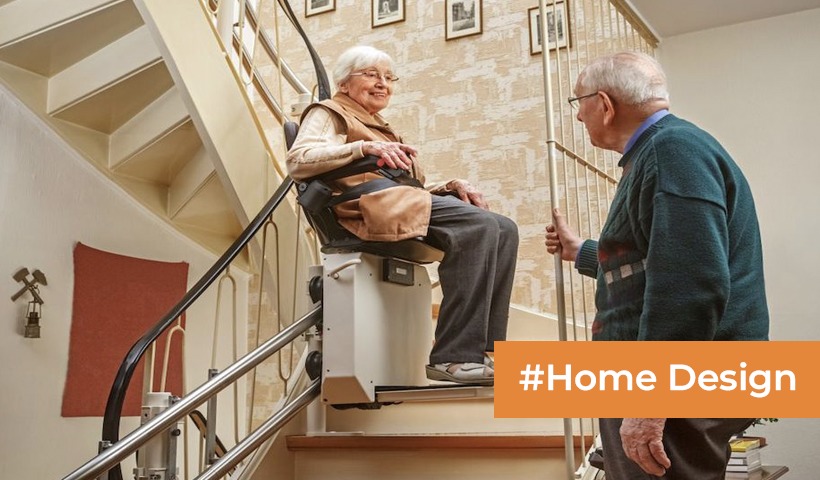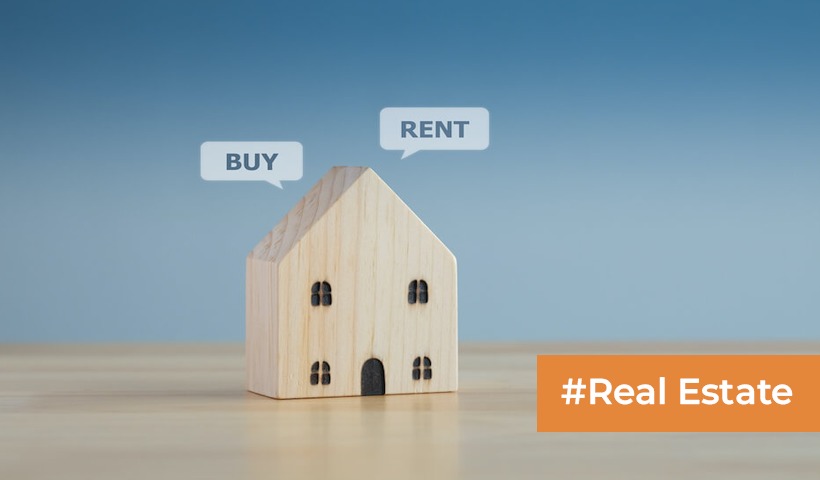What Is Built Up Area, Carpet Area, & Super Built-Up Area – Difference Explained
Understanding the distinction between carpet area, built-up area, and super built-up area is critical for prospective homebuyers. The carpet area is the real useable space within the walls, whereas the built-up area comprises both the carpet area and the walls and balcony space. The densely built-up area also includes common spaces such as staircases and lobbies. Knowing the difference between built-up and carpet area, or super built-up area versus carpet area, allows you to make more educated selections.
What is the Carpet Area?
The carpet area is the real usable space within the walls of an apartment or property, excluding the thickness of the inner walls. It contains living rooms, bedrooms, kitchens, and baths, but excludes shared areas like balconies, terraces, and halls. Simply described, it is the floor surface that can be covered with a carpet, providing a better understanding of the functional space accessible to occupants.
How to Calculate Carpet Area?
Calculating the carpet area is critical to determining the real usable space in your house. It is calculated by measuring the floor space contained within the inner walls, eliminating balconies, shared areas, and wall thickness.

Formula to Calculate Carpet Area
Carpet Area = Length × Breadth of Each Room
Step-by-step calculations Measure the size of each room.
- Assume a bedroom measures 14 feet length by 11 feet wide. Calculate the area of each room.
- Bedroom size: 14 feet x 11 feet = 154 square feet.
The living room is 16 feet by 12 feet, which equals 192 square feet.
Kitchen area: 10 feet x 8 feet = 80 square feet.
- To get the total carpet area, add the areas of each room: Carpet area equals 154 + 192 + 80 = 426 square feet.
Note: The carpet area should not include wall thickness, balconies, or other shared spaces. This estimate can help you calculate the total usable floor area within your home.
Legal Requirements Regarding Carpet Area
In addition, the RERA established several carpet-related requirements. Builders are now legally compelled to include the carpet area on the floor design. The entire price of the apartment is now computed per square foot for the carpet space. Previously, it was estimated using the super built-up area. If the carpet area rises, the builder or developer may require the buyer to pay the difference. Furthermore, the RERA regulates the carpet area at no more than 3%.
If you wish to purchase a project in a giant housing society, the builder must disclose the carpet area in accordance with RERA regulations. It is essential to have a technical specialist visit the apartment and calculate the size. If you apply for a house loan, the bank will send a technical specialist to inspect the property, and you will be able to see if the carpet area specified by the builder is the same as stated.
What includes in the carpet
area?
The carpet area refers to all usable floor space within a property’s interior walls. It includes bedrooms, living rooms, kitchens, and bathrooms, but excludes wall thickness, balconies, and common spaces such as staircases and lobbies.
- Bedroom
- Dining room
- Dressing room
- Kitchen
- Study
- Stores
- Bathroom
- Balconies within the house
- A staircase within the house
What is not included in the
carpet area?
The carpet area excludes exterior and structural features such as balconies, terraces, common areas like lobbies and hallways, as well as the thickness of interior and external walls. It also includes shafts, service rooms, and any other unusable regions located outside of the property’s interior walls.
- External areas
- Common areas
- Terraces
Importance of carpet area
Here are the major considerations that emphasize the importance of carpet area in real estate:
Accurate Assessment of Usable Space: The carpet area provides a reasonable assessment of the actual living or working space accessible to tenants. It excludes wall thickness and offers a clear knowledge of the area where all necessary goods, such as furniture, may be stored.
Transparency in Pricing: The carpet area is important in establishing the worth and pricing of a home. Because it represents the real usable area, it provides a reasonable basis for pricing discussions.
Evaluation of Efficiency and Functionality: A carpet area aids in determining a property’s efficiency and functionality. Buyers may decide the arrangement, room dimensions, and storage space accessible within the carpet.
Legal and Regulatory Compliance: In certain jurisdictions, real estate legislation requires the disclosure of carpet area to maintain transparency and safeguard buyers’ interests. Accurate portrayal of the carpet area aids in compliance with legal standards.
Investment Potential: Carpet area is an important consideration for investors wishing to rent or lease out a home. The usable space has a direct influence on rental returns and tenant preferences. Investors might use the carpet area to estimate prospective rental revenue or selling value.
What is Built up Area?
In an apartment or home, the built-up area includes the carpet surface as well as the interior walls and balcony. In India, interior walls and balconies account for 30% of the total dwelling space. If the developer specifies a built-up home area of 1000 square feet, you may expect the house’s total usable space will be around 700 square feet. The formula for calculating the built-up area of a house or apartment:
The built-up area is calculated by adding the carpet area, the wall area, and the balcony area.
How to Calculate Built up Area?
Calculating the built-up area helps calculate the overall area of a home, including interior walls and balconies. It is calculated by adding the carpet area to the thickness of the walls and other functional spaces such as balconies and utility rooms, resulting in a more complete assessment of the entire area.
Formula to Calculate Built up Area
- Measure the length and breadth of every room: Consider a living room that is 15 feet long and 12 feet wide, with a wall thickness of 6 inches (0.5 feet) each side.
- Add the wall thickness to the measurements. In our case, the updated living room measurements would be (15 + 0.5 + 0.5) feet x (12 + 0.5 + 0.5) feet, or 16 feet × 13 feet.
- Multiply each room’s modified length and breadth. In this example, the living room would measure 16 feet by 13 feet, or 208 square feet.
- Sum up the areas of all rooms. To get the total built-up area of the house, add the areas of each individual room.
Built-up area = carpet area + area of the walls + area of the balcony
What includes in the
built-up area?
The built-up area includes the carpet area as well as the internal and external wall thicknesses. It also includes balconies, terraces, utility areas, and expansions such as flower beds or verandas. However, it does not include common spaces like lobbies, staircases, and elevators.
- Courtyard at the ground level
- Garden
- Rocky area
- Well and well structures
- Plant
- Nursery
- Platform around a tree
- Overhead water tank
- Fountain
- Bench with open top and the likes, etc.
Importance of Built up area
Here are some significant considerations that emphasize the relevance of built-up areas:
Comprehensive Space Assessment: The built-up area is a precise assessment of the enclosed space within a property. This includes rooms, hallways, balconies, and other enclosed spaces.
Pricing and Valuation: A property’s worth and pricing are heavily influenced by its built-up area. It is an important aspect in estimating the cost per square foot and allows purchasers to more properly compare houses.
Legal and Regulatory Compliance: RERA requires the developer to make complete disclosure of the built-up area. This assures openness and adherence to legal standards.
Space Planning and Design: The built-up area helps with space planning and design considerations. It helps architects and interior designers grasp what is accessible.
What is Super Built up Area?
The super built-up area contains the apartment’s built-up space as well as a proportionate share of common facilities such as lobbies, stairs, elevators, hallways, and other amenities like clubhouses and swimming pools. Often referred to as the “saleable area,” it provides a larger perspective of the overall area used by the property, including shared spaces, resulting in a more thorough picture of space utilization inside the structure.
How to Calculate Super Built up Area?
The super built-up area is computed by combining the built-up area with a proportionate amount of common facilities including lobbies, staircases, and other shared areas. This figure aids in understanding the entire saleable area, giving a complete picture of the whole property size.
Formula to Calculate Super Built up Area
If you want to calculate the super built-up area, then the formula is:
Super built-up area = built-up area + proportionate common area
Here’s a step-by-step approach on calculating the super built-up area:
Determine the built-up area: Calculate the built-up area using the previously indicated approach, which takes into account the interior measurements of rooms as well as wall thickness.
Identify shared spaces: Determine the proportional share of these shared areas assigned to the given property. This includes amenities such as lobbies, staircases, corridors, elevators, gardens, and gyms.
Add the appropriate share of shared areas: For example, if common areas account for 10% of a 1,000-square-foot property’s built-up area, the additional area is 1,000 square feet multiplied by 0.10 = 100 square feet.
Calculate the super-built-up area: Add the built-up area acquired in Step 1 to the extra area estimated in Step.
What includes in the super
built-up area?
The super built-up area encompasses both the property’s built-up space and a proportionate part of common areas such as lobbies, stairs, elevators, hallways, and facilities such as clubhouses and pools. It also takes into consideration common spaces such as basements and parking lots, giving a complete picture of the overall usable area in a residential or business complex.
- Built-up area of the flat
- Clubhouses
- Air ducts
- Pipe
- Lift
- Staircase
- Lobby
- Swimming pool
- Gymnasium
Importance of Super Built up area
Here are some crucial considerations emphasizing the relevance of hyper built-up areas.
Cost Calculation and Transparency: Pricing and cost estimates are based on the super built-up area. It contains not just the individual apartment, but also communal areas like lobbies, hallways, and facilities.
Inclusion of Shared Facilities: The super built-up area has a proportionate share of shared areas and facilities. This guarantees that the costs of maintaining and delivering common amenities are shared by the purchasers.
Legal and Regulatory Compliance: Many places have rules requiring the declaration of the super-built-up area. This assures openness and adherence to legal standards.
Investment Considerations: Investors in real estate frequently evaluate the hyper built-up region when considering rental income or selling.
If you want to calculate the super built-up area, then the formula is:
Super built-up area = built-up area + proportionate common area
We may claim that the hyper built-up area is popular these days. There are several flats and societies in Mumbai that are quite densely constructed. There is another component to it. Before the RERA mandated that builders sell flats based on carpet area, they utilized the super-built-up area as the space-measuring unit to capitalize on the lack of clarity in space computation. The adoption of the super built-up area as a measurement unit allowed them to reduce the property’s per-square-foot cost. It also offers the customer the appearance that they are investing in a vast property when in fact they are not.
What is the Loading Factor?
The loading factor is a percentage that indicates the proportion of common spaces added to the carpet area when calculating the super built-up area. It normally varies from 20% to 40%, allowing developers to designate appropriate space for common facilities such as lobbies, hallways, and recreational zones. Understanding the loading factor is critical since it affects both the cost and the usage of the property.
Formula to Calculate Loading Factor?
The formula for calculating the loading factor is as follows:
Super-built-up area equals carpet area * (1 – loading factor).
For example, if the loading factor is 1.4, the developer has increased the carpet area by 40%. In this situation, the constructed area is 1000 square feet, but the super built-up area is 1400 square feet. The loading factor is 400 square feet.
Difference between carpet area, built up area and super built up area
Understanding the differences between carpet area, built-up area, and super built-up area is critical when analyzing a property. Each phrase relates to a distinct component of the property’s measurement, influencing its usefulness and value. The table below highlights the distinctions between these locations, allowing purchasers to make more educated judgements when purchasing a house.
| Parameter | Carpet Area | Built-Up Area | Super Built-Up Area |
| Definition | The usable floor area within the internal walls. | Carpet area plus the thickness of internal and external walls, and balcony areas. | Built-up area plus a proportionate share of common areas like lobbies, staircases, and amenities. |
| Includes | Bedrooms, living room, kitchen, and bathrooms. | Carpet area, walls, balconies, and utility areas. | Built-up area, common areas, lobbies, corridors, and amenities like gyms or pools. |
| Excludes | Wall thickness, balconies, and common areas. | Common areas like lobbies, corridors, and staircases. | Balconies and non-usable spaces outside the property boundary. |
| Usage | To calculate the actual usable space inside the house. | To get an overall idea of the physical space occupied. | To determine the saleable area, including shared spaces. |
| Typical Percentage | 70-80% of Super Built-Up Area | 80-90% of Super Built-Up Area | 100% (total saleable area) |
Conclusion – Difference Between Carpet Area, Built Up Area and Super Built Up Area
Understanding the distinctions between carpet area, built-up area, and super built-up area is critical for making sound real estate decisions. The carpet area specifies the useable space, the built-up area comprises walls and balconies, and the super-built-up area includes shared areas. Knowing these characteristics allows purchasers to assess property worth, compare prices, and choose the best investment for their requirements and tastes.
FAQs
What is house carpet area?
House carpet area refers to the actual usable floor space within the walls of an apartment or house, excluding areas covered by the walls, balconies, or other common spaces.
How do you calculate carpet area?
To calculate carpet area, measure the length and breadth of each room, multiply them to get the area of each room, and sum up the areas of all rooms, excluding wall thickness, balconies, and common areas.
What is the meaning of built-up area?
The built-up area includes the carpet area plus the thickness of the internal and external walls, balconies, and other usable spaces like utility areas, giving a broader measurement of the property size.
What does super built-up area include?
Super built-up area includes the built-up area plus a proportionate share of common areas such as lobbies, corridors, staircases, and amenities like gyms, pools, and clubhouses.
What is the super built-up area of 1000 sq ft?
If the super built-up area is 1000 sq ft, the carpet area would typically range between 650-800 sq ft, depending on the loading factor, which varies between 20% to 40%.
What is the difference between carpet, built-up, and super built-up area?
Carpet area is the usable space within the walls. Built-up area includes the carpet area plus walls and balconies. Super built-up area also adds a share of common areas like corridors and amenities.
Does the built-up area include the balcony?
Yes, the built-up area typically includes balconies, terraces, and other projections in addition to the carpet area and wall thickness.
How to calculate carpet area from a super built-up area?
To calculate the carpet area from super built-up area, use the formula:
Carpet Area = Super Built-Up Area ÷ (1 + Loading Factor).
For example, if the loading factor is 30% and super built-up area is 1000 sq ft, the carpet area is:
Carpet Area = 1000 ÷ 1.3 = 769.23 sq ft.
Is a balcony included in the carpet area as per RERA?
No, as per RERA (Real Estate Regulatory Authority) guidelines, the balcony area is excluded from the carpet area definition. Only usable floor space within the internal walls is considered a carpet area.
How much carpet area is good for a 3 BHK?
A good carpet area for a 3 BHK apartment typically ranges from 900 sq ft to 1,200 sq ft, depending on the layout and builder specifications.
How much carpet area is good for a 2 BHK?
A good carpet area for a 2 BHK apartment usually falls between 600 sq ft and 800 sq ft, offering enough space for comfortable living.
Disclaimer: The views expressed above are for informational purposes only based on industry reports and related news stories. PropertyPistol does not guarantee the accuracy, completeness, or reliability of the information and shall not be held responsible for any action taken based on the published information.




